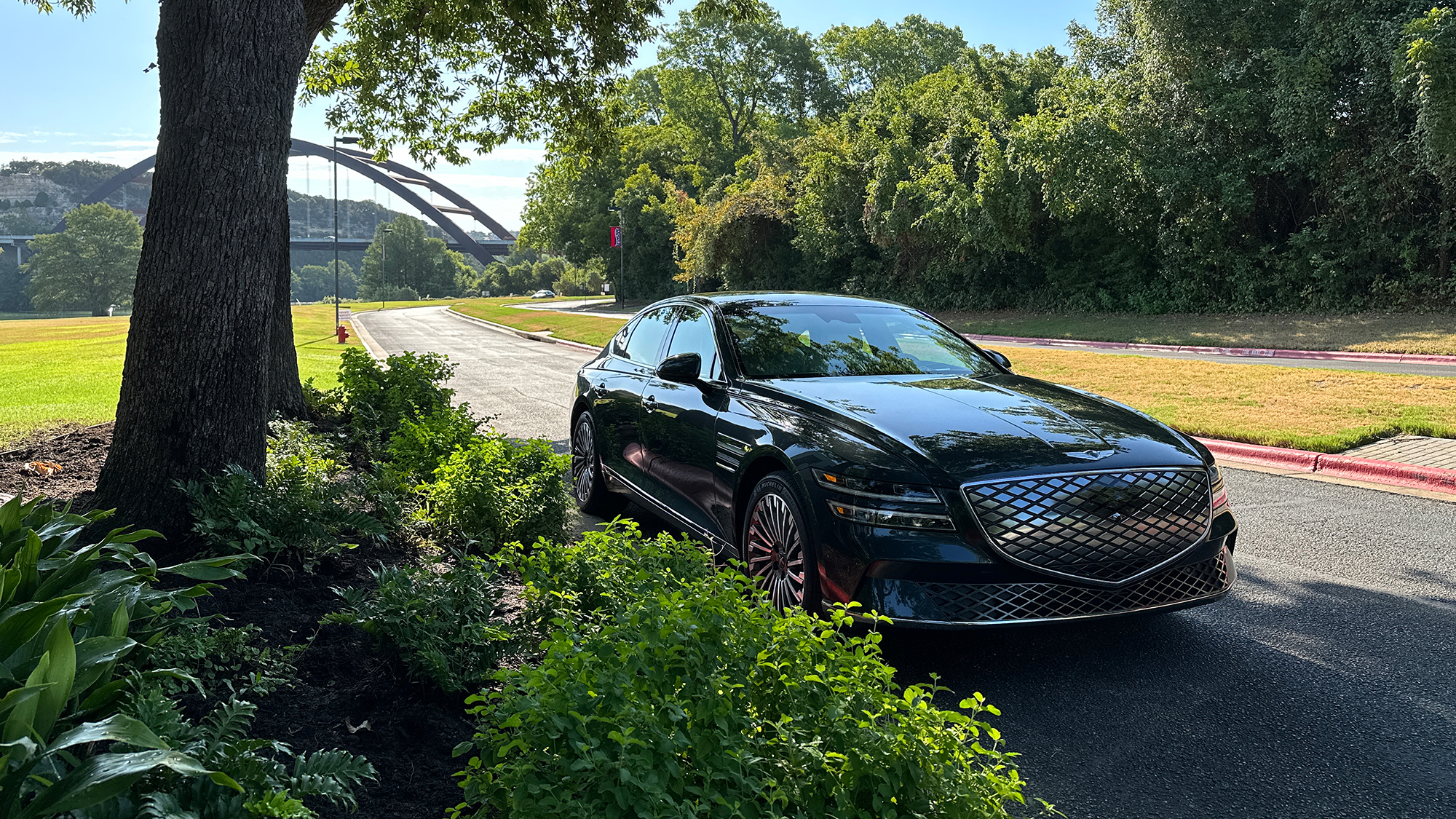

Genesis has been making a name for itself with thoughtful design and standout features in recent years, catapulting the automaker to a 14 percent year-over-year sales increase in 2022. Hyundai’s luxury arm has steadily amassed fans and wowed the public with firsts like facial recognition technology and a rotating crystal orb gear shifter, both of which are found in the company’s GV60 EV. With vehicles like the GV60 and the G80, it’s ramping up EV production.
While the Korean brand’s G60 is futuristic and bold, the Genesis Electrified G80 sedan looks almost exactly like the gas-powered version inside and out. This is no shortcut; it’s a deliberate tactic to quench the thirst of EV curiosity without requiring massive adjustments of its buyers.
Read on to learn more about the Electrified G80 and how Genesis is converting fans of its luxury sedans into the EV segment.
Two kinds of EV buyers
The GV60, which was unveiled in 2021, is the brand’s first all-electric vehicle built on the Hyundai Motor Group’s Electric-Global Modular Platform, but it’s not Genesis’ first EV. That honor belongs to the Electrified G80 sedan, which debuted at the 2021 Auto Shanghai event in China. Before that new architecture was ready, the Electrified G80 was built on a dual-purpose platform that serves both internal combustion engines and motor-driven EVs.
As the electric-global platform was in development, Genesis engineers had the foresight to create a building block that would ease the transition, especially for its luxury sedan enthusiasts.
Genesis has been producing a gas-powered sedan called the G80 since 2017. It introduced a pure EV version of that car, which they call the “Electrified G80,” for 2023 on the same platform. Typically, when an automaker refers to a car as “electrified,” that means it contains a hybrid system. That’s not the case here, as Genesis opted to use the modifier to keep the G80 family names intact.
“What we’re seeing at Genesis is that there are two camps of EV customers: the ones who represent the early adopters, want to lead the charge, and care about tech and sustainability,” says Genesis representative Jarred Pellat. “They want the vehicles that scream ‘I’m an EV!’”
The others, Pellat says, want something familiar. They covet the benefits of EV ownership: a quiet ride, fun driving dynamics with low-end torque, and power; they want to enter this new era of electrification, but still want to keep their “normal” luxury car. In essence, this segment wants a car that happens to be an EV but doesn’t look like an EV. When the Nissan Leaf EV debuted, for instance, it was a funky little capsule that made a clear statement. Volkswagen’s ID.4 is also in that category of cars that don’t look like any of its gas-powered siblings.
That’s especially important in Genesis’ home market in Korea, where the G80 is one of the brand’s top-selling vehicles. In Korea, many G80 owners are repeat customers, and as the oldest model in the lineup, it has the longest-standing customer base. If a customer is tremendously satisfied with their G80, they can transition to an EV easily because it looks and feels very similar. Until they press the accelerator and experience the instant torque of an EV, that is.
The Electrified G80 vs. the gas-powered G80
Starting at a smidge over $80,000, the Electrified G80 rings in at nearly $30,000 more than the base model gas-powered G80.
The regular G80 is offered in two trims: 2.5T models are equipped with a 2.5-liter turbocharged four-cylinder engine good for 300 horsepower and 311 pound-feet of torque, and it’s available with either rear-wheel or all-wheel drive. Upgrading to the 3.5T Sport means all-wheel drive only with a turbo 3.5-liter V6 and a boost to 375 hp and 391 pound-feet of torque.
Even though the electrified version of the sedan takes a small horsepower hit for a total of 365, the torque is considerably more at 516 pound-feet. When you step on the pedal, it moves. That’s somewhat surprising, considering the electrified G80 weighs a half-ton more than the 2.5T and a quarter-ton more than the 3.5T Sport models.
Hooked up to a DC fast charger, the Electrified G80 charges up from 10 percent to 80 percent in 22 minutes, Genesis says, which is slightly longer than the 18 minutes it takes for a GV60. The charging port is camouflaged in the grille with a push-button release, making it easy to pull straight up to a charger and get going.
Total cargo space suffers a bit between the two models, as the gas-powered G80 boasts 13.1 cubic feet of trunk space and that number drops to 10.8 cubic feet in the G80 EV. Other than that, though, the G80 and Electrified G80 are similar enough to be comfortable.
Genesis isn’t killing off its sedan line any time soon, either. It’s common in Korea for customers to use luxury sedans with chauffeurs, and Genesis models (Hyundai models as well) are equipped for that setup. The Genesis G80 comes with unique buttons embedded into the bolster of the passenger seats nearest the center console. In order to move the seat or change the incline, it’s within reach for the driver to push a button instead of leaning way over to the far side of the passenger front seat or getting out of the car to adjust them for rear seat passengers.
With gas-powered and EV models of the same sedan, Genesis isn’t just optimizing its production line. It’s making it easy to switch. Not everyone wants to look different and stand out as they transition to the EV world, they just want to blend in. That’s where the Electrified G80 makes its stand.
